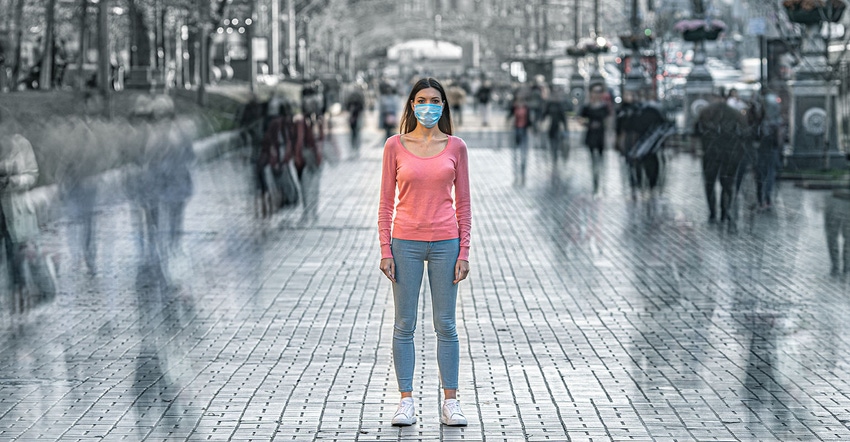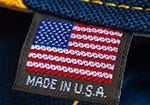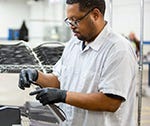A Few Thoughts on Medical Plastics in the Time of COVID-19
In keeping with a most unusual year, we forgo the customary top 10 list and share some random reflections inspired by the top medical stories of 2020 on the PlasticsToday site.
December 23, 2020

COVID, COVID, COVID. As I sat down to write my usual year-end review of plastics in the medical space, that’s what ran through my mind. Of course, there was nothing remotely normal about 2020, thanks to a once-in-a-century global pandemic. In keeping with a most unusual year, I thought it appropriate to forgo the customary top 10 list and share some random reflections inspired by the top medical stories of 2020 on the PlasticsToday site.
Antimicrobials are ready for prime time.
In September, business advisory firm Lux Research published a report on antimicrobial coatings, positing that the technology experienced a reversal of fortune since the pandemic hit the planet. “These coatings previously struggled to find widespread adoption due to difficulties in quantifying their impact on human health, but the pandemic has drawn attention to them as an important safety measure,” wrote Lux Research in its report.
|
Image courtesy Kraton/Kalim Adobe Stock. |
On the heels of that report, PlasticsToday published a slide show highlighting antimicrobial technologies involving polymers. The Biaxam block copolymer, developed by Kraton was among the featured products. It is currently awaiting regulatory approval in the United States and other markets.
Biaxim reportedly quickly inactivates up to 99.99% of the SARS-CoV-2 virus, which causes COVID-19, and other microbes, according to the company. It could be used as a coating on personal protective equipment as well as a host of high-contact surfaces in everyday products.
Check out some of the other antimicrobial materials in this slide show.
Is COVID a catalyst for reshoring?
The shortage of personal protective equipment and medical devices needed to diagnose and treat COVID-19 related conditions in the early days of the pandemic brought into stark relief the dependence of US companies on off-shore suppliers and the inadequacies of a just-in-time manufacturing ethos. Companies began looking not just at the cost of goods, said Rosemary Coates of the Reshoring Institute, but also at what happens if the supply chain shuts down. “We’re now seeing a hefty increase in reshoring,” Coates told PlasticsToday in the early part of November. “We have several new projects we are working on. A combination of cost and risk has led to companies realizing it’s real.”
|
Image: Anton Gvozdikov/Adobe Stock. |
Is it though? While there has been incremental evidence of companies reshoring some operations — or nearshoring them to Mexico, for example — the overall picture is more complicated. Effectively responding to a global pandemic requires global action. Autarky is a word you don’t hear much any more, and for good reason. The rapid production of billions of single-use syringes to deliver vaccines won’t be accomplished solely within our shores. And let’s not forget that the Pfizer vaccine is actually a multinational achievement — it should properly be called the Pfizer-BioNTech vaccine, and BioNTech is a German company. Disentangling the global supply chain won’t happen overnight, and the impulse to do so may well fade once business gets back to some kind of normal.
“If the US government provides direct and proper support and incentivizes domestic manufacturers [of PPE], I believe there will be some reshoring of production,” Mark Bonifacio told PlasticsToday back in May. Bonifacio heads a consultancy that works with medical device OEMs and their suppliers. “There will be at least a short-term effort to address reshoring and localization of supply chains. In medtech as in other industries, we have been talking about this for at least the last four years. There is a need to manufacture the right products in the ‘right’ places — Asia for Asia, EU for EU, and North America for North America,” said Bonifacio. “When global conditions return to some sense of normalcy, however, “market forces will be back at work in terms of availability, labor, and material costs,” he added.
The art of the pivot.
Automakers in the United States and around the world adopted a quasi war-like posture in the early days of the pandemic to reconfigure production lines to produce medical equipment and PPE to mitigate shortages. In March, Ford Motor Co. announced that it would collaborate with GE Healthcare to produce a third-party ventilator at a plant in Michigan, and Cadillac Products Automotive Co. stepped up to manufacture PPE for front-line medical personnel. In Germany, Mercedes-Benz announced in April that it would make its battery of 3D printers available for the production of medical devices. “With our highly competent team and years of experience in 3D-printing technology, we are ready to make our contribution to the production of medical devices,” said Jörg Burzer, Member of the Board of Management of Mercedes-Benz AG, Production and Supply Chain.
|
Image courtesy Ford Motor Co. |
The spirit of solidarity extended well beyond the automotive sector. Lego announced in April that it had begun making visors for healthcare workers at its production plant in Billund, Denmark. Employees worked around the clock to make it happen, from sourcing the materials to building the molds, said the company.
Here in the United States, Nike collaborated with Lubrizol to produce face shields and lenses for powering air-purifying respirators, which were donated to hospitals.
The plastics industry at large also contributed in countless ways, as demand for PPE, tubing for ventilators, Plexiglas shields, and the like surged. Clare Goldsberry highlighted some of the initiatives in her article, “Plastic Really Is Fantastic, and So Are the People Working in This Industry.” The stories you’ve sent us about the resources you are devoting to making PPEs and other plastic products for healthcare workers and patients are “overwhelming,” wrote Goldsberry. “Unfortunately, we can’t report on each initiative, but we do want to thank each and every one of you for your generous efforts to aid this country,” she wrote back in April. We at PlasticsToday want to reiterate that sentiment today, as we head into the most unsettling holiday season of our lifetimes.
Stay safe and, despite everything, have a joyful holiday season.
About the Author(s)
You May Also Like







